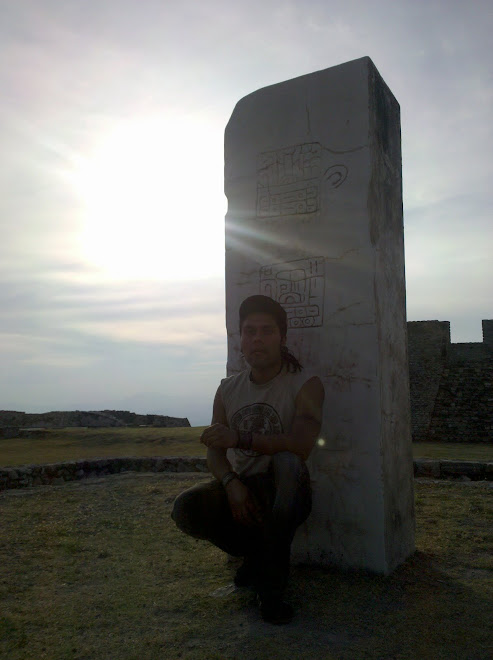





malinalco was one of the most important architectural sites because of its asociation with aztec religious history and for its military nature.Malinalco is the place where the tree levesls of teh cosmos unite .. the sky the earth and the underworld . its well known for its shamnism and as the place where copil, nephew of hutzilopochtli and son of Malinalxochitl, fought huitzolopochtli , copil was defeated , and his heart was thrown over lake texcoco and landed on the island that would later become tenochtitlan.
TEMPLE CUAUHCALLI
The major estructure of malinalco is a temple called the cuauhcalli, meaning house of eagles. like mos aztec arquitecture the cuauhcalli represents in its contruction historical and religious beliefs like honor to tlaltecutli or coatlicue the earth godess trough is function of sanctuary tha represent the earth itself on which aztec warriors struggled in warfare and perished fighting offering their lives to the sun.but also can represent like the main temple of tenochtitlan. mt coatepec (snake mountain'.which is a transitional place on the surface of the earth (tlalticpac)connecting the middle world with the heavens and underworld is the mitycal house of coatlicue represent by the serpent mouth door.
This site is where new members were inducted into the Order of the Jaguar and Eagle.
At the entrance you find a couple of warriors seating over giant snake heads standing guard besides each side of the door, the interior if off-limits because the floor is still original, take a look and you will see a huge tongue of a snake rolled out like a red-carpet welcoming the warriors to the special ceremonies. Inside you will find benches and statues, all of them carved out of the rock of the hill, so there are no external pieces at all. Every single piece was hand carved, it was simply no margin for error, all the artisans should have been top notch and masters of their trade. This was a place were only kings, priests and warriors could enter.
it was bealived by warriors that the hearts placed in the circular hole of the shrines floor aided huitzilopochtli in his nightly quests , in the exterior next to the portal on the southeast side, there is a xiubcoatl, the weapon used by huitzilopochtliwhen he traveled from east to west , and also confirm that the dsay of the winter solstice december 21 at noon the light of the sun coming from a cleft in a mountain located in front ofn the temple enters through the doorway , iluminating exactly the head of the eagle that its the embodyment of huitzilopochtli, the sun himself , furthemore , we know through fray bernandino de sahagun that on this day the panquetzaliztli was celebarted , a festival dedicated to honor sacrifice because this was the day of the descent of huitzilopochtli to the earth , it means that the orientation of this temple was built with this solsticial effect in mind...













